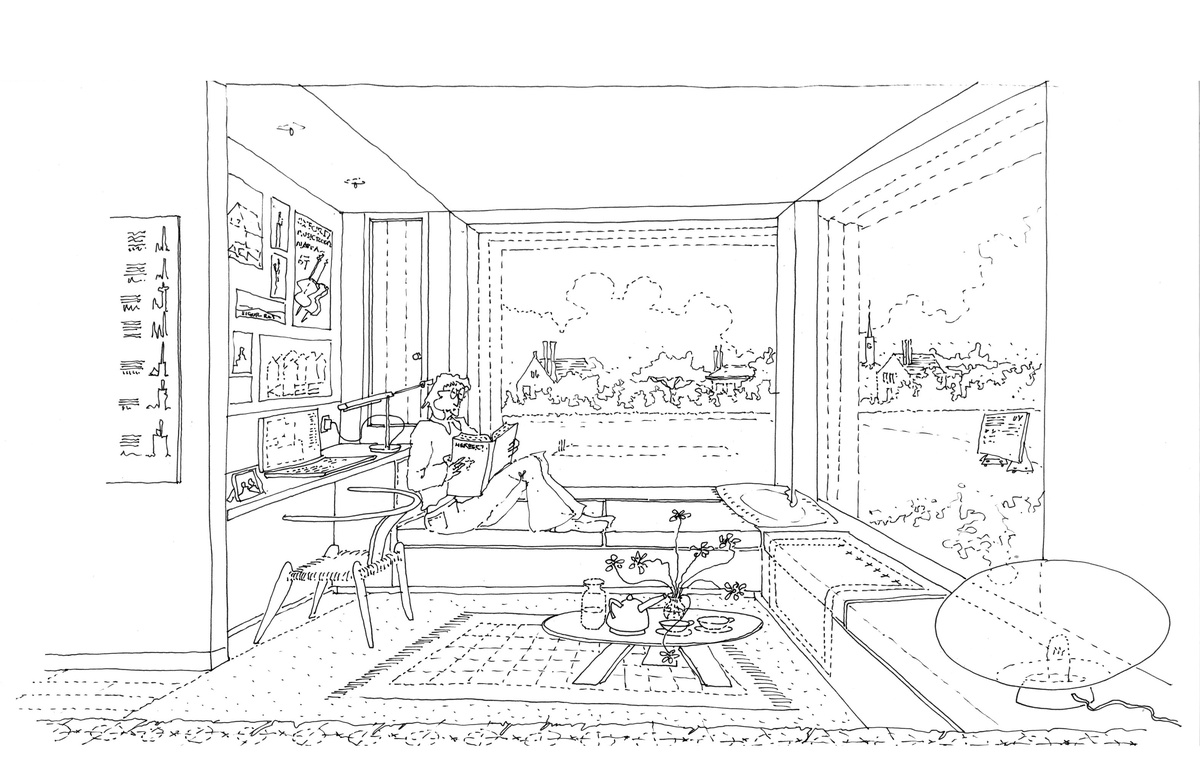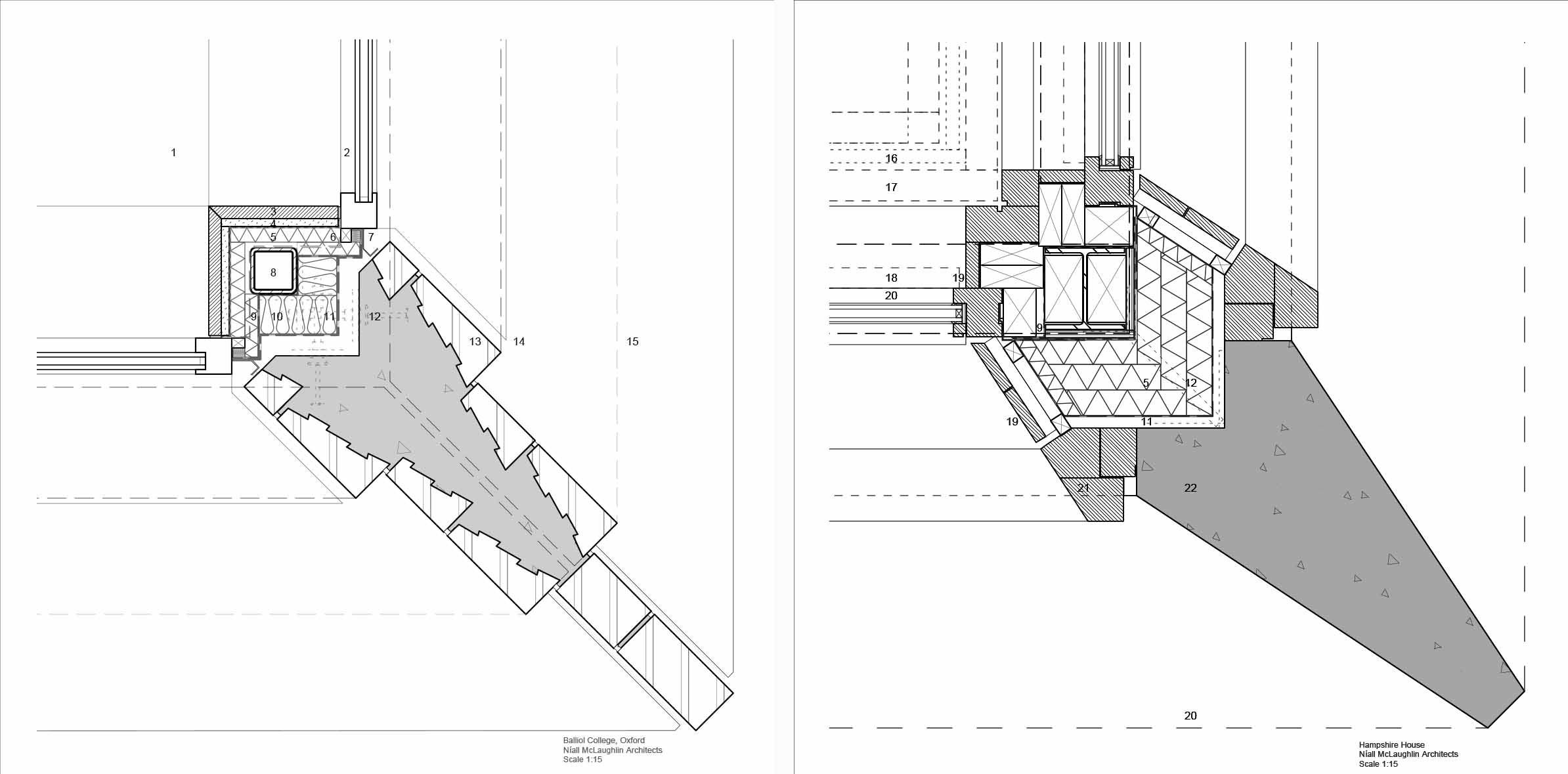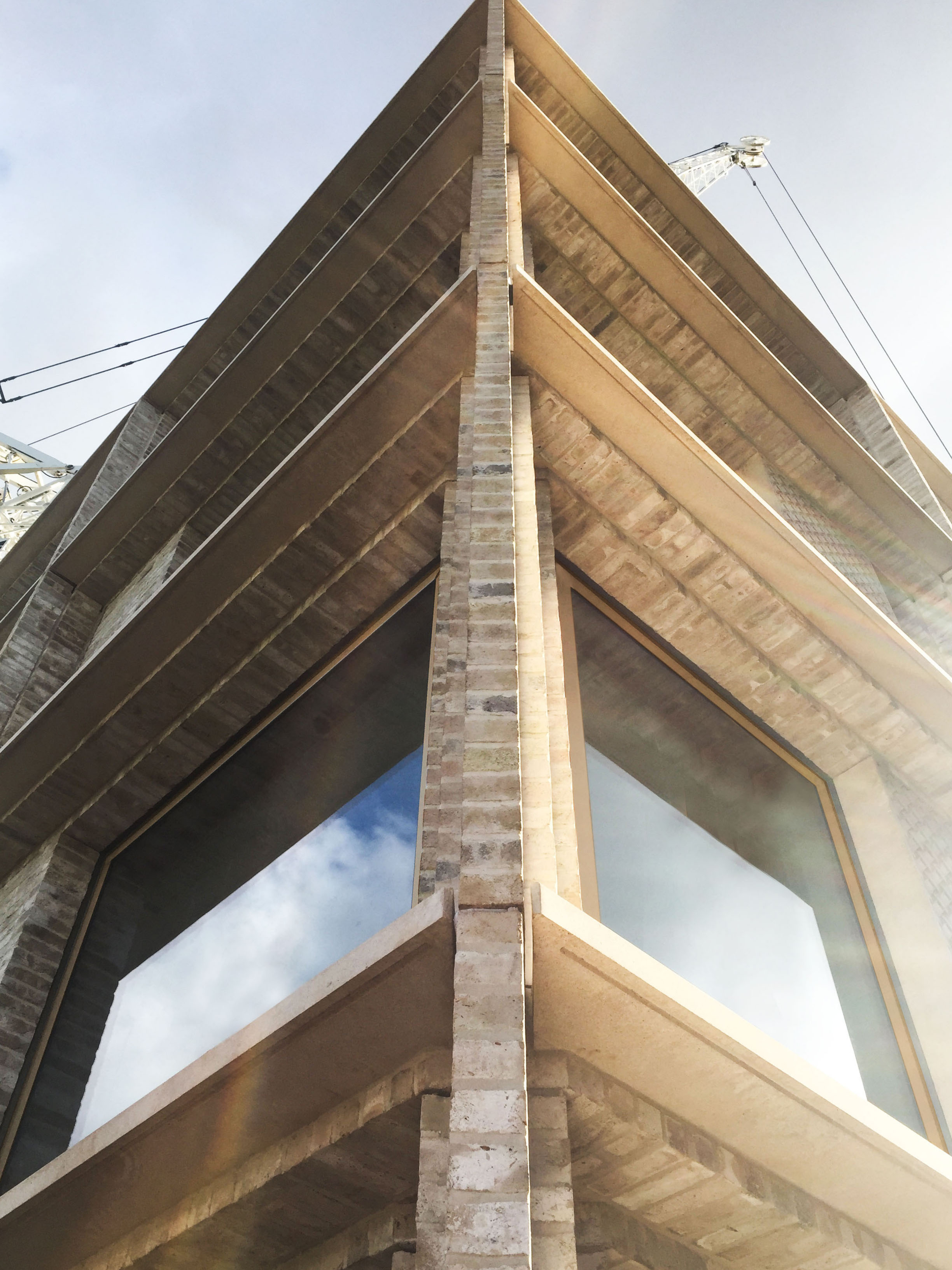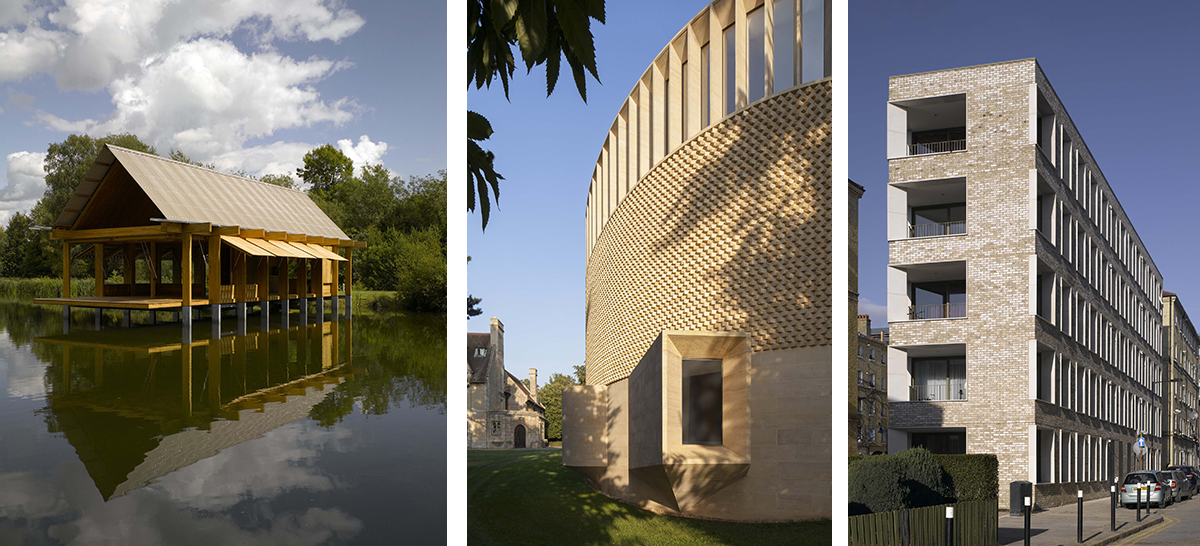MASTER’S FIELD PROJECT
APRIL 2019

When reflecting on the work of our practice, the chamfered corner, is a recurring interest. This detail has developed over the years from our preoccupations with the Miesian re-entrant corner, the simplicity of a trabeated structure, and a desire to find ways of expressing a deep façade.
Simple chamfers in concrete and stone were employed in recent completed projects for Hampshire House and The Sultan Nazrin Shah Centre, Oxford. At the Master’s Field site in Oxford, currently under construction for Balliol College, a corbelled chamfered detail is incorporated in a load bearing façade. This project comprises eight student accommodation buildings and a pavilion arranged around a series of courtyards overlooking a cricket pitch.

A brick-clad chamfer at the corner between two windows is used throughout the accommodation buildings. This establishes a shifting perspectival relationship as one moves through the site, and gives all the buildings a common language. Corbelled brick and concrete lintels and mullions set up a trabeated structural rhythm which clearly defines each individual student bedroom and creates a delicate play of light and shadow across the façade. A series of finely detailed brick and concrete panels are layered within the depth of the window reveal, articulating a secondary rhythm which expresses the transition from solid to glazed elements.
The detail enables the depth and structure of the wall to be elegantly expressed, maximizing its presence when viewed externally and minimizing its presence internally. It also forms a generous threshold which provides privacy for students inside engrossed in their study. For moments of welcome distraction, the large picture windows frame uninterrupted views over the cricket pitch and across the campus.
The expression of a chamfered corner produces challenges in construction, particularly when expressed in precast concrete components clad in corbelled brickwork. When forming acute angles with orthogonal bricks, special consideration must be given to alignments and bonding. Interface details demand careful thought regarding sequencing and tolerances to achieve a symbiosis of structural performance with aesthetic ambition.
Externally, in the plan detail shown here, the apex of the chamfer is formed from stacked brick headers. This exposes three faces of each brick, limiting the choice of bricks, which are typically produced with only one finished stretcher face. Brick specials are required to form the chamfered corbel of the lintels, and grids are carefully set out to ensure alignment of vertical and horizontal corbelling. We looked to the meticulously detailed and crafted brickwork of Jensen-Klint’s masterpiece, Grundvig’s Church in Copenhagen, for expression of stepped vertical forms.
Internally, minimising the corner where the windows meet produces intricate challenges in the alignment of linings, blinds, reveals and fitted furniture. This complex resolution of constituent parts all work hard to achieve the aesthetic objective of the simple glazed chamfered corner.

Detail Key
1.Whitewashed ply bench 2. Aluminium window 3.Whitewashed plywood reveal 4.Plasterboard 5.Rigid insulation 6.Steel window fixing brackets 7.Metal pressing 8.Wind post 9.EPDM/ vapour barrier 10.Mineral wool insulation 11.Breather membrane 12.Steel restraint brackets 13.Corbelled brick faced precast concrete mullion 14.Flashing 15.Concrete cill 16.Concealed curtain track 17.Oak joist over 18.Concealed roller blind 19.Timber panels 20.Timber framed window 21.Prelaminated timber frame 22.Precast concrete mullion 23.Precast concrete coping over
A STYLE FOR OUR TIMES?
NOVEMBER 2015

“The way to make good architecture – that is, to respond with dignity to the relentless jostling of theoretical positions and of the buildings themselves – can be to say very little indeed and just to enquire into what a particular place might, by way of buildings, most need”
Niall Hobhouse in Translations: Florian Beigel and Philip Christou, Christoph Merian Verlag 2014
Each year the Stirling Prize shortlist sparks debate about contemporary architectural style and it was no different this year, particularly with such a distinctive set of buildings. The prize is “presented to the architects of the building that has made the greatest contribution to the evolution of architecture in the past year” and so any building shortlisted could be considered to exemplify a style for our times.
In practicing architecture I have been conscious of past and present styles or trends and how these influence design. The offices I have worked in each have different design styles and a different set of architectural references. This variety has enriched my experience of design; as a result, I do not consider myself to have a fixed stylistic agenda or claim a particular preference for one style over another.
I have now been at NMLA for almost a year, working on one project but well aware of the rich variety in the practice’s past and present portfolio. Whilst there may be a discernible common language in the architecture, I would say this transcends any one particular style. To pick three of the most celebrated projects, the Chapel at Ripon College is very different to the Fishing Hut which is very different to Darbishire Place. Of course these buildings have different briefs but perhaps their ‘style’ is most significantly determined by the ‘place’ they inhabit (where ‘place’ refers to location and context – physical, social, historical and political).
The Chapel sits on a sensitive site. It must respond to its bucolic setting in a clearing amongst trees, the historically-significant college building stock behind and the views to and from the valley below. The Clipsham stone is in keeping with the Limestone of the other college buildings. The smooth base helps ground the building in its natural setting whilst the rough-cut dog-toothed stone alludes to the craft evident in the historic buildings nearby and has an organic quality whose textured surface perfectly captures the shadows of the trees. The clerestorey windows glow as a halo and act as a beacon on the hill when seen from the valley below. Rowan Moore described the chapel as sitting “comfortably amid Cotswold scenery and gothic revival architecture”.
The Fishing Hut is set in the landscape, between water and sky. Its simple form and construction are familiar to rural or agricultural settings but the level of craft and its quality materials make it delightful for the user, elevating it beyond purely functional. With its operable screens and shutters, it is both solid and transparent, as much about shelter, security and shade as it is about light, air and opening up to the landscape it inhabits.
At Darbishire Place the new brick block reflects the massing and characteristics of the existing Peabody estate blocks. The brick selection and white precast concrete window surrounds complement the brick and white-painted window reveals of the Edwardian buildings around the courtyard. Inset balconies enable the new façades to have a flatness akin to those of the surrounding buildings. A simple kink in building’s footprint allows the block to work with its context on both sides – a longer elevation addresses the street while a more compact elevation works with the proportions of the other courtyard façades. This kink also provides a route in from the street and so the new block can complete the courtyard without closing it off.
In terms of these three buildings, it is perhaps more difficult to identify a common architectural language than to comment on how they respond to place. I think they are all concerned with light and shadow and each display a level of craft in their execution. For me though the architecture of each project has a fineness. The fragile crown of stone fins and frameless clerestorey windows at the top of the chapel; the intricate timberwork, lightweight permeable envelope and the slight cantilevered deck hovering over the water to the front of the fishing hut; and the open corners and slender corner posts containing the inset balconies to Darbishire Place. It is these moments of finesse that unite the three buildings and other projects in the office.
Style has played an important and often polemical role in the development of architecture over the last 150 years. However, whilst we can entertain debate about a cycle of trends in design, what style is ‘now’ and what is coming next, it seems more pertinent to be aware of the wide variety of styles and take influence from sources that are most appropriate to any one project’s place.
In the same vein as the opening quotation, we should not be concerned with a particular style for a particular time, but rather a particular style for a particular place.



